Let's Go !
Kita-Kamakura station – Yuigahama Beach
Coming from Tokyo, get off the train at Kita-Kamakura station, one stop before Kamakura – it’s smaller and less congested as a starting point.
[MAPID S: JR Kita-Kamakura Station]
[JR Kita-Kamakura Station]


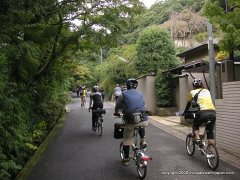
Go east on Rt. 21 and then turn south on a narrow road that takes you through one of the seven passes of old Kamakura, literally carved through rock. Careful on the steep, but short downhill slope which is kind of a shortcut linking Kita-Kamakura and Kamakura. When you come to a ‘T’, turn right (west).
[MAPID 1 :Kaizoji Temple]
[Kaizoji Temple]
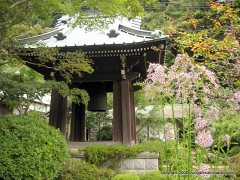
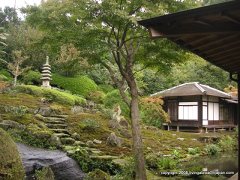

Kaizoji Temple, set in the western hills, was built in the 13th century and rebuilt after fires. On the approach to the temple you pass one of ten wells of old Kamakura, called “Sokonuke’ or bottomless well. Park your bike and follow the stone walkway through an impressive gate into the temple grounds. To the right is a belfry with a large bell, the Main hall, and a thatched roof building -- the priest’s living quarters. The priest himself may be sweeping the grounds with a bamboo broom. Approaching the Main hall, it’s proper to throw a few coins into the large rectagular box with wood slats across the top. To the left is a sanctuary (Yakushido) containing a statue of Yakushi Nyorai, the god of medicine and also several monuments inscribed with haiku.

Riding southeast toward central Kamakura, you pass a small shop on the right with a yellow banner that says ‘hachimitsu’ or honey - sample several fragrant varieties and take some home for your Honey.
Turning west again, pedal up a short, steep hill to Zeniarai Benten Shrine.
[MAPID 2 : Zeniarai Benten Shrine]
[Zeniarai Benten Shrine]
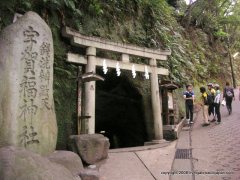

When you visit a Shinto shrine the custom is to rinse your hands and mouth at the water basin before passing through the ‘torii’ gateway. At the large cauldron of burning incense, letting the smoke waft over your body is throught to relieve any aches and pains. The shrine is set inside a cave where, in 1185 Minamoto no Yoritomo found a gushing spring. Zeniarai means ‘money-washing-water’ and you will people lined up to wash their coins in the pools of water. It’s believed that spending the money washed in the spring will double in value and come back to you --good news in hard economic times!
Now we head east to central Kamakura, usually crowded with tour buses and cars crawling along the street.
[MAPID 3:Central Kamakura(JR Kamakura Sta.)]
[Central Kamakura(JR Kamakura Sta.)]


You can stop for lunch at one of the restaurants, but it’s also fun to buy a traditional box lunch (‘eki-ben’) at the train station -- Pickled mackeral sushi is one delicacy. Pack it in your pannier and head down to Yuigahama beach for a picnic.
[MAPID 4:Yuigahama Beach]
[Yuigahama Beach]
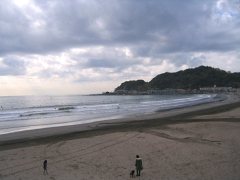

Yuigahama Beach is the entire 3.2 km beach that goes from Inamuragasaki, which separates it from Shichirigahama, to Zaimokuza's Iijima cape, which separates it from Kotsubo and the Miura Peninsula. the name is customarily used to indicate just its half west of the Namerigawa river, while the eastern half is called Zaimokuza Beach.
Yuigahama Beach - JR Fujisawa Sta.
Follow the river north and cross over a bridge to Myohonji Temple, set in the eastern hills. This part of Kamakura is refreshingly peaceful and quiet compared to the more famous temples on the west side crowded with tourists.
[MAPID 5: Myohonji Temple]
[Myohonji Temple]
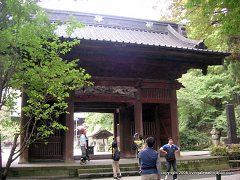
The origin of this temple relates to Nichiren, who founded one branch of Buddhism in the 13th century. Enter the grounds through a large gate guarded by a pair of fierce-looking gods. There is a large Founder’s Hall and to the left is a mounument of the poet and monk, Sengaku.
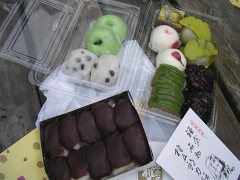
Now it’s time to explore the main shopping street which lined with traditional shops specializing in a particular food made by hand for generations: Japanese sweets (wagashi), kamaboko fish cakes, chikara-mochi (pounded rice cakes) and more. Point to whatever looks mouth-watering and they will box and wrap it for you to savor later. (See below for wagashi shop information)
[MAPID 6: Kamakura Shopping Street]
[Kamakura Shopping Street]
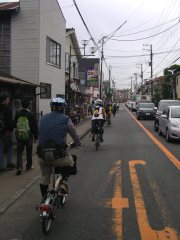
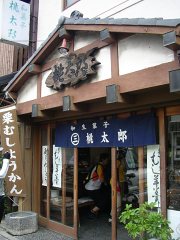
The shopping street that runs along the Eno-Den from Kamakura Station has many traditional food shops. A nice street to follow when going to the Kamakura-Daibutsu. The Japanese sweets(wagashi) shop Momotaro is famous for it's of mochi with azuki bean paste.
1-12-2 Yuigahama Kamakura-shi, Kanagawa
0467-22-1522
open 9:00-18:30/closed Wed.
http://www.kamakura.info/S60734.html
A visit to Kamakura isn’t be complete without seeing the famous Daibutsu – Great Buddha, designated a National Treasure in southwestern Hase area.
[MAPID 7 : Kamakura Daibutsu]
[Kamakura Daibutsu]
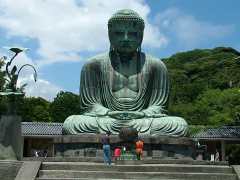
The 13+ meter tall bronze statue dating from 1252 dominates the grounds of Kotokiun Temple and is where most tourists head first. For a small admission you can go inside the statue for a different perspective.
[MAPID 8 : Hasedera]
[Hasedera]
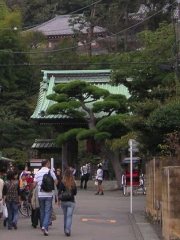
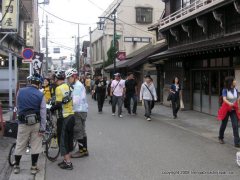
One of the oldest Buddhist temples in Kamakura is Hasedera, founded in 736. You can walk through a lovely garden with a pond and climb the steps leading to the huge Kannondo hall that contains a statue of the 11-faced Hase Kannon or Goddess of Mercy -- the largest wooden statue in Japan. On the way up the staircase you see row upon row of small stone Jizo statues – the protector of children, each one representing a parent’s prayer for a child that was not born. In addition to the Kannon hall are other halls containing an Amida Buddha statue and other treasures related to Buddhism. There is also an observation deck when you can view the coastline.
After a full day of sightseeing, we ride along Sagami Bay on Route 134
[MAPID 9 : Route134]
[Route134]
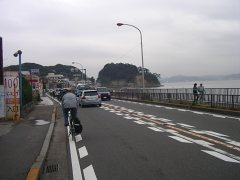
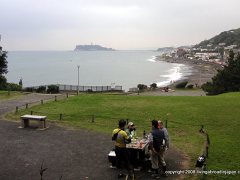
Route 134 is the runs along the beachside, and is one of the symbols of the Kamakura and the Shonan Beach area. Very crowded in summer, with lots of cars heading for the beach. Inamuragasaki Park is a good place to stop for a rest. There is a good view of Enoshima from the park.
then turn inland along a river to Fujisawa station. There we take our bikes and souvenirs on the train back to Tokyo.
[MAPID 10 : JR Fujisawa Sta.]
[JR Fujisawa Sta.]
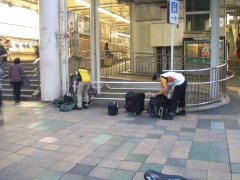
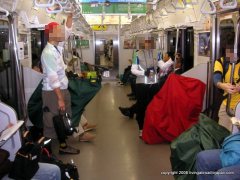
Fujisawa Station is a major railway station around the Shonan area. It is served by the JR Tōkaidō Main Line, Odakyu Enoshima Line, and the Enoshima Electric Railway. The station is 51.1 rail kilometers from Tokyo Station.
Powered by Cycle Tokyo Project
DISCLAIMER: Cycle Tokyo! acknowledges that the information appearing on this website may not be accurate or comprehensive, and may be out of date. Cycle Tokyo ! accepts no liability whatsoever for any claim related to any errors or ambiguities in the information appearing on this website.